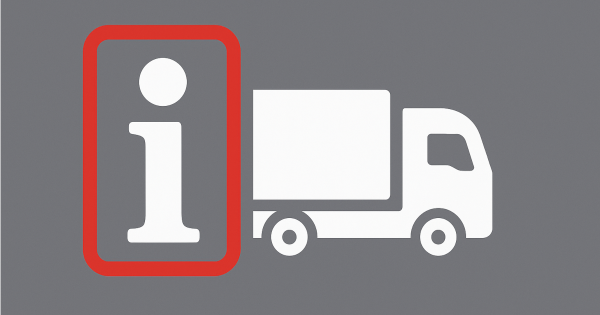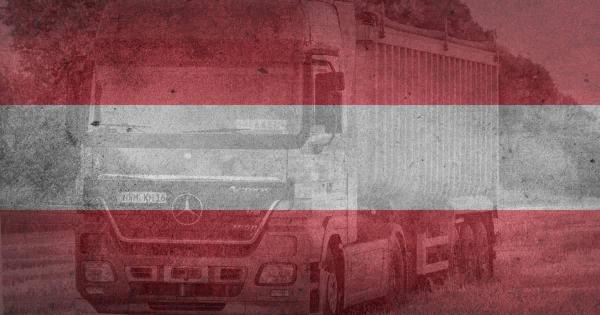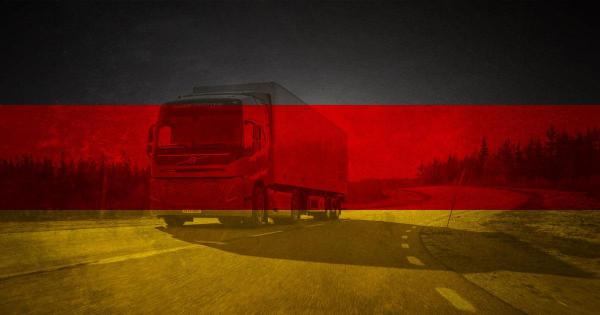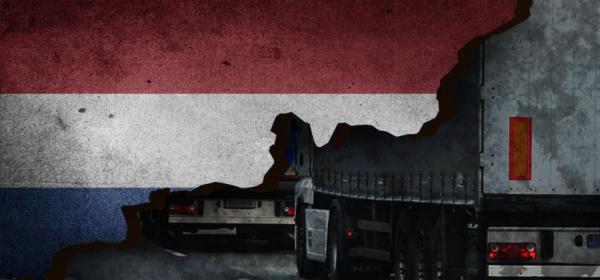
Hamburg: Köhlbrand Bridge closed. Detours for trucks over the weekend
One of Hamburg’s main port connections will be completely closed this coming weekend. The Köhlbrand Bridge will be inaccessible from Friday, November 14 at 10:00 p.m. until Monday, November 17 at 5:00 a.m. The information was confirmed by Autobahn GmbH des Bundes.
Detour routes have been designated for truck drivers:
➡️ Westbound (U30):
Rossdamm – Neuhöfer Damm – Rethedamm – Hohe-Schaar-Straße – Kattwykdamm – Moorburger Hauptdeich – Fürstenmoordamm – Georg-Heyken-Straße – Waltershofer Straße – Vollhöfener Weiden – Finkenwerder Ring – Finkenwerder Straße
➡️ Eastbound (U40):
Finkenwerder Straße – Vollhöfener Weiden – Waltershofer Straße – Georg-Heyken-Straße – Fürstenmoordamm – Moorburger Hauptdeich – Kattwykdamm – Hohe-Schaar-Straße – Rethedamm – Neuhöfer Damm – Rossdamm
⚠️ The A7 motorway in the construction area will remain open. The restrictions apply exclusively to the Köhlbrand Bridge and nearby local roads.

Netherlands closes A7: detours for trucks, delays up to 90 minutes
On the night from Tuesday, November 18 to Wednesday, November 19, between 11:00 p.m. and 5:00 a.m., the A7 motorway (section at the Afsluitdijk entrance) in the direction of Friesland will be completely closed from the Den Oever (14) exit.
The closure is necessary to repair significant pavement damage; in several locations, the asphalt has holes and is not suitable for normal use. During this period, traffic toward Friesland via the Afsluitdijk will be entirely blocked.
For truck drivers, this means a mandatory detour: the recommended route is via A7 → N307 (Houtribdijk) → A6. The estimated additional travel time may be up to 90 minutes.
Traffic in the opposite direction, toward North Holland, remains unaffected and can continue as usual.

New Restrictions for Trucks in Austria. B317, B320 and B114 Bans Reinstated
Austria has reinstated driving bans for trucks over 7.5 t on three key routes in Styria: the B317, B320 and B114. After road signage was corrected in accordance with a Constitutional Court ruling, the bans have been reintroduced and supplemented with night-time restrictions for vehicles over 3.5 t.
B317 Scheifling – Dürnstein
On the B317 (Friesacher Straße) between Scheifling and Dürnstein, the driving ban for trucks over 7.5 t (including both tractor units and truck–trailer combinations with a total mass exceeding 7.5 t) has been reinstated. It applies in both directions on the following segments:
– km 19.000 + 069 m – km 19.400 (B317–B96 junction)
– km 0.200 – km 22.800 + 062 m (southern end of Dürnstein)
The ban has been in force since the installation of new signage in October 2025, from 05:00 to 22:00. Additionally, a night-time ban for vehicles over 3.5 t applies from 22:00 to 05:00. The signage has been adapted to meet the requirements of the Constitutional Court (VfGH), ensuring the full legal validity of the ban and improving road safety.
Exemptions:
▫️ Road maintenance vehicles, military vehicles, breakdown and towing services, public safety services, and vehicles used in disaster response.
▫️ Training vehicles used for driving courses and driving licence examinations.
▫️ Vehicles operating in origin or destination traffic (Ziel- und Quellverkehr) in areas that cannot be accessed without travelling through the restricted section.
▫️ Vehicles operating in origin/destination traffic within the districts of Murau, Murtal, Leoben, Tamsweg and St. Veit an der Glan, provided that the transported cargo requires loading or unloading there, or if technical tools necessary for these operations must be transported.
▫️ Trucks whose registered place of business is located in the above-mentioned districts, when the trip is made to or from the company’s regular parking location, including empty runs. Vehicles whose drivers live in these districts, if the loading/unloading location is closer to their residence than to the company headquarters.
B320 Ennstalstraße
Restrictions for heavy goods vehicles have also been reinstated on the Austrian B320 Ennstal Straße. On 27 October 2025, the district authority of Liezen announced the reintroduction of a driving ban for trucks with a GVW above 7.5 t from 05:00 to 22:00, except for origin and destination traffic and journeys undertaken by drivers living in the areas covered by the regulation. In addition, the night-time ban for trucks over 3.5 t (22:00-05:00) remains in force.
Austria reinstates a truck ban for vehicles over 7.5 tonnes on the B320 Ennstal Straße
Exemptions from the ban
1. Traffic within specific municipalities (origin or destination traffic, including empty runs):
▫️ District of Liezen: Admont, Aich, Aigen im Ennstal, Altaussee, Altenmarkt bei St. Gallen, Ardning, Bad Aussee, Bad Mitterndorf, Gröbming, Grundlsee, Haus, Irdning-Donnersbachtal, Landl, Lassing, Liezen, Michaelerberg-Pruggern, Mitterberg-St. Martin, Öblarn, Ramsau am Dachstein, Rottenmann, Schladming, Selzthal, Sölk, Stainach-Pürgg, St. Gallen, Trieben, Wörschach
▫️ District of Gmunden: Bad Goisern am Hallstättersee, Bad Ischl, Ebensee am Traunsee, Gosau, Hallstatt, Obertraun, Sankt Wolfgang im Salzkammergut, Traunkirchen
▫️ District of St. Johann im Pongau: Altenmarkt im Pongau, Filzmoos, Forstau, Radstadt, Untertauern, Tweng – Obertauern section
2. Traffic within specific areas (origin and destination traffic, including empty runs):
▫️ District of Liezen: Gaishorn am See, Wildalpen
▫️ Districts: Bruck-Mürzzuschlag, Graz-Umgebung, Hartberg-Fürstenfeld, Leibnitz, Leoben, Südoststeiermark, Weiz, Hallein, Zell am See, Tamsweg, Spittal an der Drau, Kitzbühel, Lienz
▫️ District of St. Johann im Pongau: Bad Gastein, Bad Hofgastein, Bischofshofen, Dorfgastein, Eben im Pongau, Flachau, Goldegg, Großarl, Hüttau, Hüttschlag, Kleinarl, Mühlbach am Hochkönig, Pfarrwerfen, St. Johann im Pongau, St. Martin am Tennengebirge, Sankt Veit im Pongau, Schwarzach im Pongau, Wagrain, Werfen, Werfenweng
▫️ District of Kirchdorf an der Krems: Edlbach, Hinterstoder, Klaus an der Pyhrnbahn, Molln, Rosenau am Hengstpaß, Roßleithen, Sankt Pankraz, Spital am Pyhrn, Vorderstoder, Windischgarsten
▫️ District of Salzburg Umgebung: Ebenau, Faistenau, Fuschl, Hintersee, Hof bei Salzburg, Sankt Gilgen, Strobl
▫️ District of Vöcklabruck: Steinbach am Attersee, Unterach am Attersee
3. Exemption related to the driver’s place of residence:
▫️ Applies to trucks whose driver lives in one of the municipalities listed under points 1 or 2, and the planned loading or unloading point is closer to the driver’s residence than to the company’s headquarters.
B114 Triebener Straße
The driving ban for trucks over 7.5 t on the B114 has been in force since 16 June 2025 (updated version of 29 October 2025).
Exemptions:
– Vehicles operating in origin or destination traffic in the municipalities of Hohentauern, Pölstal, Pusterwald, Trieben and in the cadastral community of Pöls.
– Vehicles belonging to companies based in this area – permitted to travel to and from their regular parking location.
– Emergency services vehicles: rescue services, police, military (Bundesheer), roadside assistance, fire brigade.
– Training vehicles used for driving lessons and examinations.

The Wiehltal Bridge is bursting at the seams. Germany’s A4 may be closed due to overloaded trucks
Truck traffic on the A4 section in the Bergisches Land region continues to pose a serious challenge. The Wiehltal Bridge is operating beyond its permissible load capacity despite the relief measures introduced in December 2024. The route operator, Autobahn GmbH, and ADAC warn that if the situation does not improve, a full closure of this key transport link may become necessary.
Autobahn GmbH emphasizes that both overloaded trucks exceeding the permissible gross vehicle weight and improperly loaded combinations with excessive axle loads continue to use the bridge. For this reason, authorities are appealing to drivers to strictly follow the regulations: no vehicles over 44 tonnes, maintaining a minimum distance of 50 metres between trucks, and rigorous compliance with axle load limits.
ADAC Nordrhein highlights the potential economic consequences of a possible closure. It stresses that costs for the economy could reach hundreds of millions of euros annually, and that truck drivers and freight operators in the region would be forced to cover additional detour kilometres amounting to millions in total – not per individual vehicle, but the cumulative distance of all transport traffic affected. As a result, fuel costs, CO₂ emissions and congestion levels would rise. ADAC also calls for consistent checks of overloading and distance compliance, as well as considering – as a “last resort” – the installation of a barrier with a scale at the bridge entrances near the Bielstein and Gummersbach exits.
For the transport industry, the A4 in this region is a strategic east-west corridor. Any disruption to traffic entails significant risks of delays, additional costs and the need for rerouting. Logistics companies and drivers must take possible restrictions into account, comply with weight and distance regulations, and monitor announcements from the route operator. The Wiehltal Bridge remains a critical point in the transport network. Overloading and the risk of a full closure require action from drivers, transport companies and authorities. The most important measures remain adhering to the 44-tonne limit, maintaining proper distance and avoiding axle overloading – otherwise, a closure of the route is possible.

France: Night-time closure of the A40 motorway
Drivers travelling on the A40 in France will face major disruptions during the night of 24–25 November. The section between the Bonneville Zones Industrielles (junction 17) and Cluses (junction 19) will be completely closed due to the removal of concrete barriers installed for works related to the Flux libre system.
During the night from Monday 24 November to Tuesday 25 November, between 20:30 and 05:30, the stretch between junctions Bonneville Zones Industrielles 17 and Cluses 19 will be entirely closed to traffic. The closure is necessary to dismantle the concrete delineation used during works on the future Flux libre gantry in Vougy.
A detour via secondary roads will be provided for all vehicles. Preparatory works for the installation of the new gantries began on 22 September and also include the construction of safety shelters. Despite ongoing works, two lanes in each direction have been maintained, albeit with reduced width. Speed limits are in force until 12 November towards Geneva and until 24 November towards Chamonix. Removing the concrete safety barriers requires several night-time closures. Road authorities urge drivers to exercise caution, follow the signage and take the detours into account when planning their routes.

Tyrol: As Many as 30 Days of Truck Traffic Dosage on the A12 and A13
The Tyrolean authorities have published the official traffic dosage calendar (LKW-Dosierung), which provides for as many as 30 days of controlled truck entry onto the A12 Inntal Autobahn toward Innsbruck, and indirectly also onto the A13 Brennerautobahn corridor. This is a continuation of Tyrol’s long-standing policy aimed at reducing the overload on the transit corridor and minimising the risk of traffic paralysis.
As part of the traffic dosage scheme, police begin checks at 5:00 a.m. at a designated checkpoint on the A12 near Kufstein-Nord, slowing the flow of trucks and allowing them onto the route based on the current situation along the Inntal corridor. There is no fixed hourly vehicle limit – capacity is regulated dynamically. Authorities emphasise that the measures are to be applied only to the extent necessary and may be lifted earlier if traffic conditions no longer require restrictions.
The schedule also takes into account planned renovation works on the Lueg Bridge (A13) – the block processing dates have been coordinated with restrictions resulting from these works. Introducing traffic dosage on such days is intended to minimise disruptions and ensure smooth transit.
2026 SCHEDULE
| ▪️07.01.2026 (Wednesday) ▪️02.02.2026 (Monday) ▪️09.02.2026 (Monday) ▪️16.02.2026 (Monday) ▪️23.02.2026 (Monday) ▪️02.03.2026 (Monday) ▪️09.03.2026 (Monday) ▪️16.03.2026 (Monday) ▪️15.05.2026 (Friday) ▪️26.05.2026 (Tuesday) ▪️27.05.2026 (Wednesday) ▪️28.05.2026 (Thursday) ▪️01.06.2026 (Monday) ▪️05.06.2026 (Friday) ▪️08.06.2026 (Monday) ▪️06.07.2026 (Monday) ▪️13.07.2026 (Monday) ▪️20.07.2026 (Monday) ▪️27.07.2026 (Monday) ▪️07.09.2026 (Monday) ▪️14.09.2026 (Monday) ▪️21.09.2026 (Monday) ▪️28.09.2026 (Monday) ▪️05.10.2026 (Monday) ▪️27.10.2026 (Tuesday) ▪️04.11.2026 (Wednesday) ▪️11.11.2026 (Wednesday) ▪️18.11.2026 (Wednesday) ▪️25.11.2026 (Wednesday) ▪️09.12.2026 (Wednesday) |

Trucks Over 20 Tonnes Banned from Parts of the Road Network in Hungary
Hungarian transport organisations are sounding the alarm over the escalating problem of introducing local restrictions for trucks over 20 tonnes without any consultation with the industry. According to the Hungarian Road Transport Association (MKFE), carriers were taken by surprise when, on 15 November 2025, a no-entry sign for heavy vehicles appeared on national road 3501 between Polgár and Hajdúnánás.
MKFE reported the situation in a letter addressed to the State Secretary for Transport, emphasising that this is yet another case of restrictions being imposed without dialogue. In previous weeks, similar actions were taken in the Győr region on roads 81 and 82, as well as in northern Hungary near Tokaj and Tállya on national road 39. The organisation stresses that such measures could only be justified in relation to transit traffic, where vehicles crossing Hungary are required by regulation to use motorways as their primary routes. However, imposing weight limits on major roads has disastrous consequences for domestic transport, which is responsible for local deliveries and regional supply chains.
MKFE estimates that the new restrictions may generate additional costs amounting to several million forints per vehicle per year. They force long detours, extend journey times, reduce operational efficiency, and worsen working conditions for drivers. The letter also notes that the restricted roads form part of the national road network, which was designed to accommodate heavy traffic; therefore, the decision to close them to transport has been deemed unjustified. Moreover, the industry points out that the detours lead drivers onto lower-quality roads with increased accident risks, while carriers are exposed to fines and police sanctions for breaching local signage that often conflicts with national road traffic regulations. MKFE warns that these measures may further deepen the shortage of professional drivers, as they hinder the execution of transports and make it impossible to comply with driving and rest-time rules.
MKFE and NiT Hungary are calling for the immediate withdrawal of the restrictions and emphasise the need for industry consultation before implementing any measures affecting the road transport sector.

Emergency Closure of the Branisko Tunnel in Slovakia
The Polícia SR – Prešovský kraj has announced an emergency closure of the Branisko Tunnel on the D1 motorway in the Prešov region.
The restrictions apply to the section between the towns of Beharovce and Fričovce, in the Branisko mountain area. This is one of the key passages on the international D1 / E50 route, leading eastwards across Slovakia and further towards Poland. The tunnel is approximately 4.975 km long and is among the longest in the country.
The closure will be in effect:
➡ from Thursday, 27 November 2025, at 23:00
➡ until Friday, 28 November 2025, at 03:00
During this time, traffic will be diverted onto road I/18. The restrictions are due to the need to clean the tunnel interior, as the monitoring cameras, roadway, and guide lines are contaminated. The police urge drivers to exercise caution on detours, especially at night and during periods of heavy truck traffic.

Slovakia Permanently Lifts Truck Driving Ban on November 17
The Government of the Slovak Republic has changed the status of the national holiday observed on November 17 – the Day of the Struggle for Freedom and Democracy. Starting from 2025, it will remain a national holiday, but it will no longer be a non-working day.
This means that on this date, truck driving bans normally applied on public holidays will no longer be in effect. The decision is permanent and not a one-time exemption – the holiday will stay in the national calendar, but without the consequence of a work-free day. For the transport industry, this is an important change: on November 17 this year, truck traffic in Slovakia will be permitted without the need to obtain special permits or rely on exemptions.
According to the government statement, the decision was made for fiscal and organizational reasons – the authorities concluded that the number of non-working days negatively affects productivity and the functioning of the economy. November 17 will retain its historical and symbolic significance, but it will no longer entail a break from work.

Rotterdam: A Month of Disruptions on A16/A20. Detours for Trucks
From November 7 to December 7, 2025, truck drivers will face major changes in the Rotterdam area. Rijkswaterstaat is carrying out reinforcement works on the viaduct structure at the key Terbregseplein interchange, which connects the A16 and A20 motorways.
Due to the works, some ramps will be completely closed to traffic, causing disruptions on one of the Netherlands’ most important transit corridors. The most significant inconvenience concerns the ramp connecting the A20 to the A16 in the direction of Dordrecht (from the Hoek van Holland side), which will remain closed continuously for four weeks from Friday, November 7 at 22:00 until Sunday, December 7 at 08:00. In addition, there will be three weekend closures of the remaining A20-to-A16 connections (traffic from the Gouda side towards both The Hague and Dordrecht):
❌ November 7 (22:00) – November 10 (05:00)
❌ November 21 (22:00) – November 22 (23:59)
❌ December 6 (22:00) – December 7 (08:00)
Rijkswaterstaat warns that the disruptions may result in 10–30 minutes of additional travel time, and during rush hours or in the event of road incidents, delays could reach up to 60 minutes.
Detours for Heavy Vehicles
Depending on the direction of travel, transit traffic will be diverted as follows:
➡ Direction Dordrecht: A20 → A4 (Benelux Tunnel) → A15
➡ Direction The Hague: A20 → A13
⭕ Transport of Dangerous Goods will be directed onto designated diversion routes:
• A20 → A13 → new A16 section (Rottemeren Tunnel)
• alternatively: A20 → A12 → A27